#castlevania season four
Text
✧・゚— SYPHA BELNADES GIF PACK
below the cut you will find #16 gifs (540x304) of SYPHA BELNADES from CASTLEVANIA S4 EP3.
these gifs were made from scratch by me, so please do not repost into gifsets/gif hunts or claim them to be your own. you can crop these for icons, or use them for crackships and edits but you MUST GIVE ME CREDIT IF YOU POST THEM PUBLICLY; please also like and reblog!
(click the title to be taken to my masterlist!)



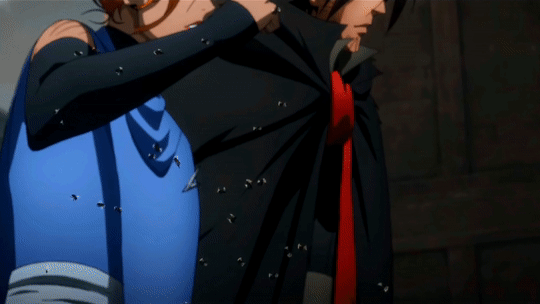












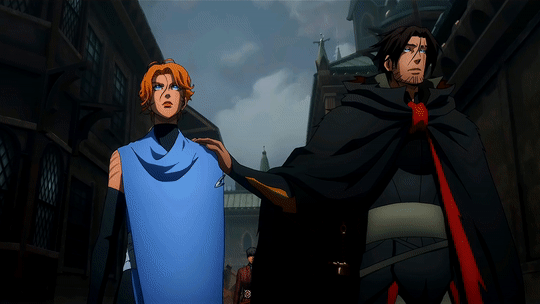

#Castlevania#castlevania gifs#castlevania sypha#castlevania s4#castlevania season four#Castlevania Season 4 Episode 3#gif#gifs#gif hunt#gifset#gif pack#Sypha Belnades#syphabelnades#sypha belnades gifs#sypha belnades gif pack#sypha gifs#castlevania season four episode three gifs#castlevania season four episode three
1 note
·
View note
Text
castlevania season three is literally one of the most fucking traumatizing things people have done in a show that i've seen in my life what the FUCK
#seriously what the FUCK was that#six year old show and here's me reacting to it now lmao#jesus fucking christ#season four better be fucking better#castlevania netflix#castlevania#castlevania season 3
39 notes
·
View notes
Text
The struggle to find very specific stories written in very specific ways*
*not by me I do not want to write it
#i dont want to be the change i see in the world#the change is like#moody spn fic that only acknowledges the first four seasons#or castlevania fanfic written very specificly#although tbh i dont really read cv fanfic much anymore because ive given up on it rip
1 note
·
View note
Text
For anyone confused by the new Castlevania animated series trailer, after seeing Trevor be fully martial for four seasons, you have to understand that there's a spectrum of how magical any given Belmont is.
You can call it the Richter scale.
#netflix castlevania#castlevania#castlevania netflix#castlevania nocturne#trevor belmont#richter belmont#terrible puns#the gods gave me the ability to type and I've decided to make that everyone's problem
1K notes
·
View notes
Text
Not trying to attack anyone here, I get it if you don't like the new Alucard.. and granted I'm pretty biased in this because I absolutely adore the old Castlevania art made by Ayami Kojima.. but
For some of the fans that are disappointed about Alucard getting a redesign, I hope you realize this new one is much closer to his design in Sympony Of The Night
(Btw.. if you're attacking or otherwise harassing anyone, but especially the artists and animators that worked on the show for this reason... SHAME. ON. YOU.)
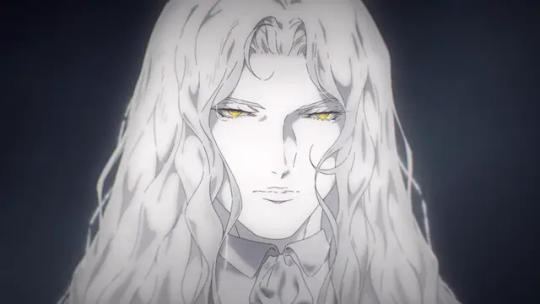

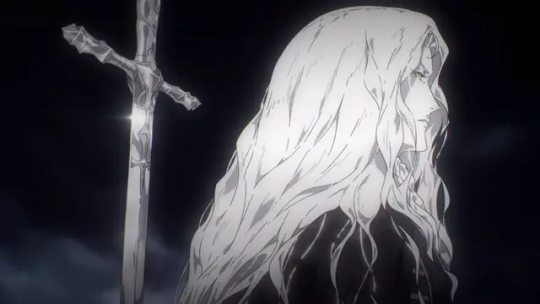

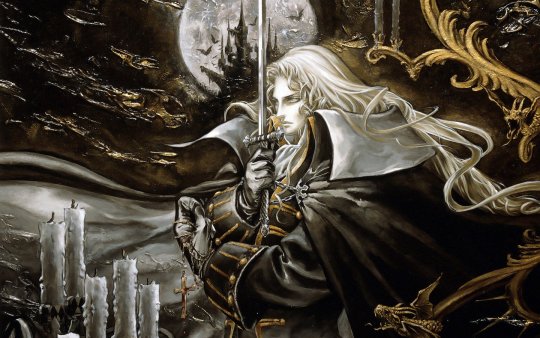
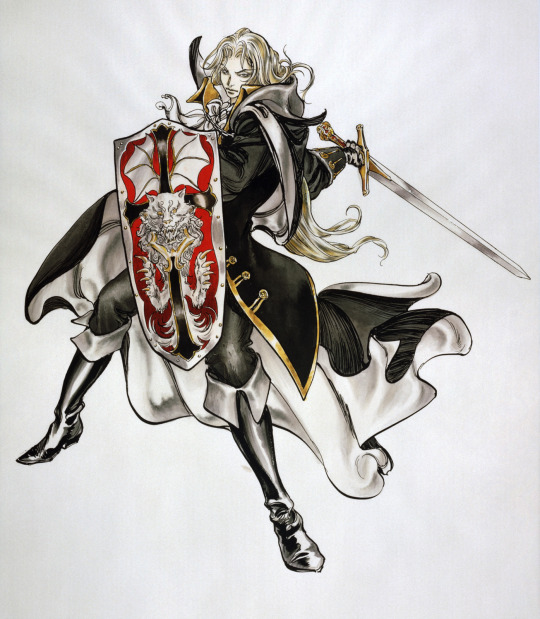


And in fact, the first four seasons are inaccurate to the source material, his design from Dracula's Curse which follows the story of Trevor looks like this.. (the horror... he looks like a basic vampire, I know..)

Side note, I really hope we see Genya Arikado before the series loses popularity... And maybe his design from Judgement making a cameo.. but I somehow doubt it..
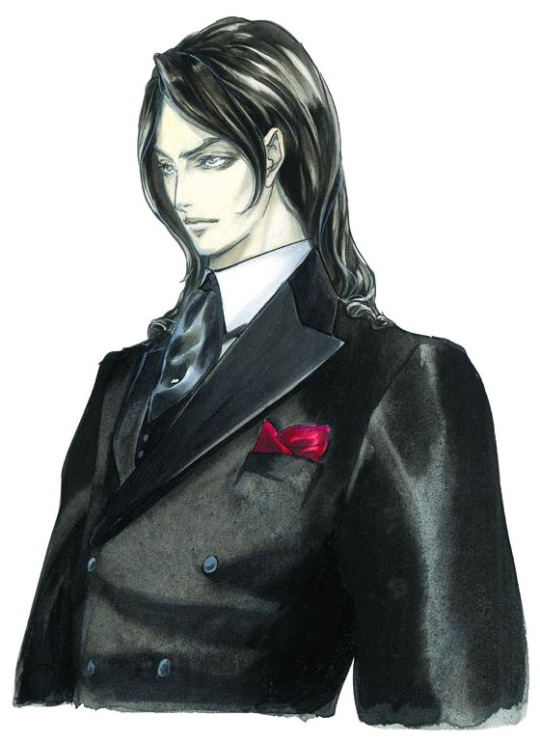
I have a feeling after the second season... assuming the showrunners don't redesign again according to demands by some Netflixvania fans... When the newness wears off, some that initially hated it may just grow to like it.
I also hope this encourages some that haven't to look into or play some Castlevania games too! Maybe if enough attention is given to the games Konami might finally do something with the series again? But maybe that's just wishful thinking...
#Castlevania#castlevania netflix#castlevania nocturne#alucard#alucard castlevania#alucard tepes#netflix castlevania#castlevania#castlevania: nocturne#castlevania: symphony of the night#Alucard redesign#Netflixvania#adrian fahrenheit tepes#adrian tepes#adr
607 notes
·
View notes
Text
I have two major criticisms for the first season of Nocturne.
The pacing and the villains.
In the original series, Seasons 1 & 2 are basically just one whole season in and of themselves. It is a focused narrative that doesn't spend a single moment wasting plot or character development.
Whenever the episodes decide to slow down, it feels deliberate. The down times in the first two seasons were rich with character interaction that helped attachments grow and allow the plot to flourish organically.
The best examples of this are when we explore Isaac and Hector's pasts; and when Trevor, Alucard and Sypha arrive at the Belmont hold. There was a rhythm to the seasons. Dialogue, conversations, contest of philosophies, witty banter, and hard truths. Then we transition smoothly to excellently animated and choreographed fight scenes that have weight because we saw these characters humanized in various ways beforehand.
For the villains, Dracula was impeccable. Weak. Starving. Exhausted. Suicidal. His grief and his hatred loomed like a shadow over every single character and plotline throughout the two seasons, and the effects of his demise echoed until the very end.
Castlevania had its flaws. It had its weaknesses. Especially when it was cut to four seasons when it really should have been five. But it was nevertheless a focused narrative.
Nocturne, for all its excellence, does have some glaring flaws that are hard to overlook.
Erzsebet feels threatening and powerful, but the more I watched the show, the more it felt like these were because of purely aesthetic reasons. Don't get me wrong—her design is gorgeous, her past seems rich with potential for the narrative, and I loved how she struck the fear of god in every hero the moment she stepped into the Abbey. But she isn't Dracula-levels of impactful.
Olrox and Drolta did most of the heavy lifting. In the first Castlevania, even when Dracula wasn't the main arc villain, his presence was felt. Erzsebet doesn't have that same weight. She feels... empty at times, as a villain.
That can definitely be fixed in season 2 and I pray that the showrunners prove me wrong. I love being proven wrong because that means the show continues to grow.
The second criticism is pacing. God, the pacing.
Nocturne at times felt all over the place.
Annette's plot of her escaping the clutches of slavery? The way we saw her perspective on the Haitian Revolution? So fucking good. Richter's struggles? Emotionally rich and hooks us immediately. It's the constant, almost dizzying shifts between them, the Abbey, Drolta, Edouard, and the past that drags it down just a bit.
I loved Nocturne. A solid 8/10 for me and I am dying in the dirt waiting for the next season.
But I think the show should've been 10 episodes to accommodate the ensemble cast and their varying plots, and I hope that Erzsebet is improved upon as a villain, a threat, and a character.
#castlevania nocturne#castlevania#richter belmont#annette castlevania#annette#erzsebet bathory#olrox#netflix castlevania#alucard#adrien tepes
428 notes
·
View notes
Note
Why do stans pretend that all of hazbins pacing and writing flaws are because of only having 8 episodes?
"Hazbin hotel was bad because they only got 8 episodes (with a second season already confirmed)"
Castlevania season 1 had to prove itself for a second season with only FOUR episodes for its first season and its some of the best storytelling in animation.

Castlevania did more with four episodes than Helluva Boss has done with two seasons.
165 notes
·
View notes
Text

Dying Has Never Frightened Us: Intergenerational Trauma, Healing, & the Burden of Legacy in Castlevania
An analytical and interpretation essay that discusses how the concept of family legacy and duty can lead to intergenerational trauma in the Castlevania franchise. Focuses primarily on the Belmont who found strength from his pain by honouring his family’s legacy no matter how heavy it felt or the burden that came with it and the Belmont who found his own strength from the ones he loved and who loved him in return.
☽ Read the full piece here or click the read more for the text only version ☽
THE BURNING NEED FOR RETRIBUTION: INTRODUCTION
The world has trauma. It is deep, collective, spanning its roots over centuries and territories dating back to when the borders of today never existed, and it has largely gone untreated—but not undiscussed.
From children’s cartoons to award winning dramas, trauma has become one of the most common topics for media to discuss, depict, and dissect. It makes sense given the sort of physical and mental gauntlet which society has been through in the past five years. Sometimes even in just the past twenty-four hours. From an uptick in disasters stemming from climate change, the rise of publicised policy brutality, genocide as a result of settler colonisation, new developments coming to light after decades of denial regarding the residential school system in Canada, and of course a global pandemic which is still making ripples. Then there is the recent examination of generational trauma which differs from culture to culture. The open wounds we’ve already left and will be leaving for future age groups.
Seeing how fiction reflects reality and vice versa, it isn’t any wonder that movies, television shows, and video games find ways of processing this worldwide sensation of frustrated ennui along with the need to find answers as to how regular citizens can fix things, including ourselves, when politicians and world leaders cannot. When reality cannot provide satisfying resolutions, when we are left confused and even angrier than before due to the apparent shortcomings of institutions meant to provide relief towards the average person, it’s natural to look towards specific media. Whether for coping mechanisms, validation for this collective and personal trauma, or simply for cathartic release so the emotions don’t have to remain bottled up.
Castlevania , both its original 2017 series and the most recent entry of Castlevania: Nocturne (as well as the video games which the show is inspired by), is no stranger to this popular trend of storytelling and characterisation. Yet this trend also comes with its own controversy. When done with a deft writer’s hand and a layer of empathetic critical thinking, trauma in fiction and how we heal from its intergenerational effects can be a powerful tool in raising awareness in regards to something left forgotten by the larger public or it can allow viewers to look inwards at themselves. Done poorly or with a lack of empathy and taste, then the floodgates open.
But beyond the usual discourse surrounding trauma in fiction (how to portray a “realistic” panic attack, what makes a “good” victim, the problematic connotations of forgiving one’s abuser, etc.), Castlevania has its own things to say about the lingering effects of grief, guilt, and pain over the course of thirty-two episodes (now a fourty episode runtime with the inclusion of Castlevania: Nocturne season one). The series—particularly the first which ran from 2017 to 2021—has now gained a reputation for being one of the darker animated ventures tackling themes of religious corruption, abuse, sexual manipulation, and injustice among many others. The value and thoughtfulness of each depicted theme ranges from being genuinely compelling to delving into mere shock value yet the series is also known for its uplifting ending and cathartic release from such dark themes.
One could write entire dissertations on each complicated character and their developments. From Dracula’s suicidal tendencies as a result of unchecked grief to Isaac’s conflicted redemptive journey beginning with his unflinching loyalty to the king of vampires and ending with him forging down his own path in life. How characters such as Carmilla, consumed by her inner agonies and burning hatred towards the world to the bitter end, was left isolated from her sisters until she was forced to choose the terms of her own death, while others like Alucard, Sypha, and to an extent Hector rose above their individual torments in favour of hope and survival. However, this examination will focus on the series’ titular family of vampire hunters. Namely, the Belmont who found strength from his pain by honouring his family’s legacy no matter how heavy it felt or the burden that came with it and the Belmont who found his own strength from the ones he loved and who loved him in return.
Note: this essay will delve into speculations and purely interpretative hypotheses stemming from the author’s own opinions in regards to how they personally read the presented text. It will also discuss heavy spoilers for the majority of Castlevania games and the first season of Castlevania: Nocturne.
—
WHAT A HORRIBLE NIGHT FOR A CURSE: THE CYCLE OF TRAGEDY IN THE CASTLEVANIA GAMES
This examination begins in the exact same place as the show began with its inspirations and references: the original video games developed and distributed by Konami Group Corporations. It’s easy to get swept up in the notion that because of the technological limitations with video games at the time, the Castlevania games are devoid of story or characterization. Yet even the most bare bones of a story found in the games can still have something to say about the burden of legacy and how trauma left unconfronted has the possibility of tearing down that legacy. The most prominent example being Castlevania: Symphony of the Night , arguably the first game to begin delving into a deeper story and character driven narrative. It follows the events of Castlevania: Rondo of Blood , a game which portrayed its protagonist Richter Belmont as a force of nature in the face of evil, always knowing what to do, what to say, and emerging victorious without so much as breaking a sweat (or candelabra).
In keeping with the time of its release and the landscape of popular media particularly in Japan, Rondo of Blood feels like a traditional 1990s action anime complete with brightly coloured cutscenes and character designs reminiscent of Rumiko Takahashi and Rui Araizumi (despite the usual classic horror elements present in every Castlevania game). This is most evident with Maria Renard, the second playable protagonist who attacks with her own arsenal of magical animals and even has her own upbeat theme music during the credits when players complete the main story in “Maria mode”. Richter also shares many similar personality traits with his counterpart, namely his optimism in the face of danger and the confidence that he will be the hero of this narrative.
Of course all this changed in the direct follow-up to Rondo of Blood , the aforementioned Symphony of the Night . Arguably the new staple of future Castlevania games to come, not only did it change the gameplay and aesthetic, it changed the very core of the characters as well. The game even begins with the same ending as Rondo of Blood where Richter fights and defeats Dracula with the help of Maria. Then during the opening crawl, we discover that during a time skip, Richter has vanished and Maria is searching for him. Surely this will be nothing less than a heroic rescue and the most powerful Belmont of his century will be restored to his rightful pedestal.
Yet for the first half of Symphony of the Night , the player is faced with a sobering realisation—the villain we’re supposed to be fighting, the one responsible for conjuring Dracula’s castle back into existence, is Richter himself. No longer the hero we’ve come to adore and look up to from the previous game. Of course, the player along with new protagonist Alucard both know that something isn’t right; perhaps Richter isn’t in his sound mind or some nefarious force is possessing him to commit evil deeds. But unless the player solves the right puzzles and find the right in-game items, Symphony ends with Alucard putting down Richter like a rabid dog. However, this ending can be avoided and a whole second half of the game is revealed.
Richter’s canonical ending is left ambiguous at best, tragic at worst. He laments over his moment of weakness, claiming the events of the game were his fault despite Alucard’s insistence that confronting Dracula was always going to be inevitable. Still, the tragedy of Richter’s fate and how he is portrayed in Symphony of the Night comes much later, when it’s implied the Belmonts are no longer capable of wielding the fabled Vampire Killer, a leather whip imbued with supernatural properties that has been passed down generation after generation. One mistake and misjudgment left the Belmont legacy in a perpetual long lasting limbo with the titular hunters themselves seemingly disappearing from history as well, leaving others such as the Order of Ecclesia to pick up the fight against Dracula’s eventual resurgence. It isn’t until the height of World War II (the setting of Castlevania: Portrait of Ruin ) when the whip’s true potential is finally set free thanks to the actions of Jonathan Morris, a distant relative of the infamous vampire slaying family. However, the only way in which Jonathan can reawaken the Vampire Killer is by defeating a manifestation of the person who last wielded it and also whom the whip abandoned nearly two hundred years prior—Richter Belmont.
Yet players and fans don’t get to see it in the hands of another Belmont until the events of 1999 when Julius Belmont defeats the latest incarnation of Dracula and seals his castle away in a solar eclipse. Even then, he loses his memory until thirty years pass and he’s forced to do battle with Soma Cruz, an innocent transfer student who is also the reincarnation of Dracula. If the protagonist of Castlevania: Aria of Sorrow succeeds in defeating the cosmic threat that has awakened his supposed “evil” destiny, then Julius can finally lay down the Vampire Killer in peace (until the sequel Castlevania: Dawn of Sorrow , of course). If not, the game ends with Julius keeping his promise to Soma should he lose sight of his human side and let Dracula be reborn once again. In a scene that directly mirrors the beginning of Symphony , Julius enters the castle throne room, Soma throws down his wine goblet, and the screen goes black. The cycle continues anew. Julius has upheld the duty of his family name but at what cost.
The theme of tragedy getting passed down through different generations, permeating from person to person even with those who are not Belmonts, is a staple of later Castlevania games following Symphony of the Night . In some instances, pain and trauma is what jumpstarts the story moving forward. Castlevania: Curse of Darkness begins with its protagonist Hector in a direct parallel to Dracula swearing revenge on the one responsible for the murder of his wife; an ultimatum that follows him every step of the way, fuelling his rage and determination up until the penultimate moment when his goal is within reach. Yet even then he cries out, claiming this “murderous impulse” isn’t truly him—it’s the result of an outside force he himself once aided before defecting before the events of the game.
Something similar occurs in Castlevania: Lords of Shadow , an alternative reimagining of the franchise that while still a topic of division amongst most die hard fans has also seen a resurgence of popularity and reevaluation. It begins with Gabriel Belmont grieving over the death of his own wife (a trope which is unfortunately common amongst the majority of Castlevania titles). This is a wound that follows him throughout his journey until an even more painful and shattering twist regarding Marie Belmont’s demise is revealed to Gabriel later in the game.
However, there is one example from the games that stands above the rest in regards to the sort of damage which generational trauma as a result of familial duty and legacy, upheld to an almost religious degree, can inflict. So much so that even a declaration of retribution can evolve into a generational curse.
—
HUNT THE NIGHT: LEON BELMONT & THE MYTH OF FREE WILL
The Castlevania timeline didn’t always have a set beginning. An inciting incident by which all future stories, characters, and inevitable calamities could base themselves off of. Rather it changed from game to game until a definitive origin was settled in 2003 with the release of Castlevania: Lament of Innocence . For at least two games, the starting point was supposed to be with Simon Belmont, making his way through a labyrinth of dark forests and cursed towns, before finally traversing the ever changing fortress in Transylvania to defeat Dracula. He even went as far as to gather the remains and resurrect the eponymous lord of his own choice just to rid himself of another curse entirely.
Castlevania protagonists are always cursed by something. Whether it be the cause of Dracula’s influence, their own actions as seen in Lords of Shadow , a curse of the flesh like how Simon had to tackle his own ailment in Castlevania II: Simon’s Quest , or something else just as common as Dracula’s curse: the burden of honouring a family duty.
A basic yet iconic 1986 entry followed by a sequel that had potential especially with the first appearance of the now famous “Bloody Tears” track but suffered from a rather confusing and lacklustre end product. Then suddenly the starting point for the franchise timeline changed drastically. Castlevania III: Dracula’s Curse despite the numerical inclusion in its title stands as more of a prequel, detailing the exploits of the Belmont who came before Simon. Not much was altered in the grand scheme of things; the titular vampire hunter still essentially slays Dracula with the help of three other playable characters, said final boss having been driven mad and more violent than ever by humanity’s slight against him. However, not only were the methods by which Dracula is defeated changed but players were given more insight into the sort of burden placed upon the Belmont family name.
When the story of Dracula’s Curse begins, protagonist Trevor Belmont isn’t revered as a legend or hero but rather a blight on larger society who the people only turn to as a last ditch effort against rising evil. The regular god-fearing people of Wallachia now fear the Belmonts and their power (it is also implied that some still feared the barbarian-esque Simon despite his legendary status) so the family is excommunicated. Trevor is forced to enlist three other outcasts—or simply two other fighters, depending on which version of the story you examine—in order to carry out the family business. Even when the rest of the world has shunned them and there are plenty of others just as capable of stopping the forces of evil, a Belmont still has a destiny to fulfil.
Yet once a series has gone on for long enough, things within the established canon are bound to change—again and again. Whether through re-examination in order to line it up better with present day morals and sensibilities, or through good old fashioned retconning in favour of something more interesting, more thought out, or less convoluted. Other times, it’s simply because either the creator or viewers wanted it to happen. In 1997, this occurred with the release of Castlevania Legends on the GameBoy, a prequel to Dracula’s Curse that was meant to serve as the actual origin for the Belmonts, Dracula, and even his son Alucard. Instead of Trevor, the very first Belmont to fight Dracula is now his mother, Sonia Belmont, seventeen years old and already burdened with the glorious purpose of her bloodline.
Sonia is undoubtedly the protagonist of her own story with agency and drive. However, the game ends with a stark reminder of why the Belmonts have a place in the Castlevania universe. The last we see of Sonia in Legends is in the form of an epilogue where she holds her newborn child and states that one day when he’s grown, he will “be praised by all the people as a hero”. Despite her triumph over Dracula—a monumental feat itself—it seems that her purpose in the end (the purpose of most Belmonts other than to forever fight evil in fact) was to merely continue the bloodline so that descendants can carry out a promise made centuries before by another Belmont—someone that neither Simon, Trevor, Julius, or Richter ever knew.
The inevitability of sudden retcons within long-running media was not as kind to Legends as it was to Dracula’s Curse . Because of how the in-game events conflicted with subsequent entries (for example the implication that Trevor is actually the son of Alucard, thus further tying the Belmonts to Dracula through blood as well as duty), both Legends and Sonia were completely removed from the canon timeline. This is merely one reason why the next attempt at creating the definitive origin for the franchise, now a cult favourite among certain subsections of the fan community, was regarded with some animosity. However, twenty years after its release, Castlevania: Lament of Innocence is considered by many as an underrated entry. It is certainly the darker title where both the hero and villain stumble through their own hardships yet neither emerges completely victorious by the end.
The opening narration crawl of Lament of Innocence describes the lives of Leon Belmont and Mathias Cronqvist. They spend most of their lives as reflections of each other; one grows into more of a fighter while the second is coveted for his intellect and ambition. Both are valorous, honourable, and products of their own respective plights. Despite his service to the church, Leon is soon systematically stripped of everything save for the clothes on his back because he wouldn’t follow their orders blindly. While Mathias is forced to watch as an uncaring god (the very same god he serves) takes away a figure of pure virtue and love. This figure, Elisabeta Cronqvist who appears to be a splitting image of Dracula’s next deceased wife Lisa Tepes, was the last remaining tie Mathias still had to whatever bit of morality he still feels, which he eventually throws away when deciding to drag his only friend and everything he holds dear into hell alongside him.
The difference is how both men react to those personal horrors and how they let it govern their pasts, presents, and futures not just for themselves but for others who follow after the dust has supposedly settled. Two men, two best friends turned hateful enemies because of an interlinked tragedy. Not only that, but also because of their perspectives, morals, and the way they view a world that is unkind to them. Both were spurred by the death of loved ones, both used it as a conduit, or rather a catalyst for the radically opposing directions in which their choices take them and their families. Leon chooses to struggle onwards towards a world free from darkness and horror despite his pain. Mathias chooses to revel in that very same darkness and pain with a fire that would burn for aeons. In the end, one thing is absolute. A single thing the two men can agree upon as they flee down adverse paths: one of them will destroy the other.
Yet the timeline of Castlevania proves that this choice comes at a great cost for the Belmonts in particular. By the end of Lament of Innocence , Mathias has revealed himself to be the great manipulator pulling the strings behind the scenes. Due to the immense grief he felt over losing Elisabeta to a presumably common illness made untreatable because of the time period’s medical limitations (coupled with his own arrogance and narcissism), Mathias finally becomes Dracula. Dominion over death and even god by has been achieved by doing what Leon’s righteously moral mind cannot comprehend: transforming himself into an immortal creature driven by bloodlust. All he had to do was lie, cheat, and cruelly outsmart everyone else around him. That of course includes Leon as Mathias’ manipulation tactics were also the cause of the mercy killing of Sara Tarantoul, Leon’s fiance, to stop her from turning into a vampire herself. After watching his former friend escape before the sun can rise and disposing of Dracula’s constant right hand man Death, Leon finally feels his anger over such a betrayal boil over. He gives one final message to Mathias, now the new king of the vampires: “This whip and my kinsmen will destroy you someday. From this day on, the Belmont Clan will hunt the night.”
This is how Castlevania: Lament of Innocence ends. Unlike other entries like Symphony of the Night, Aria of Sorrow, or Harmony of Dissonance , there is no good, neutral, or bad ending that can be achieved if the player is aware of certain secrets and tricks. There is only one for Leon and Mathias. The inclusion of multiple endings in some Castlevania games versus a singular set ending in others may seem like a small coincidental narrative choice in conjunction with evolving gameplay, but it matters in the case of Lament of Innocence. From the moment Leon enters the castle to rescue his fiance, the wheel has already started turning and his fate is sealed. Mathias has already won and Sara, along with future Belmonts, are already doomed. And Leon’s ultimatum made in the heat of the moment would go on to have repercussions centuries later. “Hunting the night” gave the Belmonts purpose but it also burdened them with that exact purpose. While Dracula deals in curses, so does the Belmont family—a curse of duty that gets passed down throughout the bloodline.
Leon Belmont was of course never malicious or cruel like Mathias was. He never wanted to deliberately curse his family because he suffered and so should they. His choice was made out of anger and retribution. Still, it goes on to affect Simon, Sonia, Julius, and others in drastic yet different ways. Yet in the case of specific Belmonts like Trevor and Richter, we see how this family legacy can have varied consequences in far more detail through the introduction of animation and serialised writing into the Castlevania franchise.
—
SOMETHING BETTER THAN A PILE OF RUINS: TREVOR BELMONT & STRENGTH FROM LEGACY
If there’s one thing that Castlevania makes abundantly clear with its four season runtime, it is that trauma does not inherently make people better or more virtuous. We of course see this from the games with Mathias and his personal crusade against god which leads to the complete dissolvement of his closest friendship. Or with Hector and the rage he feels towards his wife’s murderer, who also happens to be his former comrade under Dracula’s employment. Even Leon’s promise to both his friend, now his most despised enemy, and future descendants can also be an example of how gut reactions to pain, grief, and betrayal can have damaging consequences in the long run. This particular dissection of trauma when it affects a survivor negatively and in almost life-altering ways while still giving them a chance at achieving their own method of healing is most apparent with the animated representation of Trevor Belmont.
At its core, the first season of Castlevania airing in July of 2017 with four episodes in total is inspired by the events of Dracula’s Curse with the following seasons taking more from Curse of Darkness along with original story elements. It begins with the brutal execution of Lisa Tepes after she is falsely accused of being a witch. Shortly afterwards, Dracula declares war on all of humanity in an explosion of grief-riddled vengeance (a declaration that is not dissimilar to Mathias’ cursing of god after Elisabeta’s admittedly more natural death). Hundreds of civilians are slaughtered in the capital city Targoviste and hoards of night creatures descend upon more townships across Wallachia.
This would be the perfect opportunity for a Belmont to stand up and fight back except there is one problem: the Belmonts have been eradicated from this world on false grounds of black magic and aiding the vampire lords instead of hunting them—much like how Lisa was slandered and paid the price with her own life.
The only Belmont left surviving is Trevor himself and his introduction does not paint him in the most optimistic or even heroic light. In the midst of being excommunicated by the church, he’s been wandering aimlessly for the past few years while languishing in whatever tavern he stumbles upon. In one particular bar Trevor finds himself in, he overhears the other patrons cursing the Belmonts and blaming them for Dracula’s siege upon humanity. He tries to stay out of it and not bring too much attention to himself until one glance at the family emblem stitched into his shirt breast is enough to ignite an all out skirmish.
Trevor hides his true identity not because he’s ashamed of it, but for his own safety and self preservation. In fact, the opinion he holds of his family is the total opposite from disdain for the sort of legacy they have saddled him with even in death. He reacts strongly to false accusations directed towards the Belmonts, angrily correcting the bar patrons by stating that his family fought monsters. However, he quickly realises he’s said too much and tries saving face by once again detaching himself from possibly being connected to the aforementioned Belmonts.
It’s only when Trevor is backed into a corner and is fresh out of snappy drunk retorts (thanks to a few hard hits to his nether regions) does he finally admit to his real lineage. As mentioned earlier, Trevor finds himself caught up in the first real brawl of the series not because of the pride he feels in himself but the immense pride he feels for his bloodline. All the while, he’s given up trying to hide what he is—a Belmont—and what he was born to do—fight fucking vampires.
Every time Trevor has the opportunity to bring up his bloodline whether in a fight or in conversation, it’s usually spoken with some bravado and weight even when he’s inebriated. However, when visiting the ruins of the Belmont ancestral home in season two and thus directly confronted with what little remains of his family legacy, Trevor loses all that previous bluster and becomes far more contemplative. He doesn’t reveal much of what it was like to actually live as a Belmont, only that it was “fine” and “no one was lonely in this house”. Even when staring up at the portrait of Leon Belmont, he says nothing and instead firmly grips the very weapons which his ancestor must have also wielded.
It’s clear that Trevor feels no shame, bitterness, or lack of respect towards his family history despite the hardships that have come with it. Still, it’s difficult for him to truly accept the duty of being a Belmont and Trevor continually struggles with it over the course of two full seasons. Upon arriving at the ruined city of Gresit which is under constant threat of night creature attacks, Trevor doesn’t seem particularly concerned with the people’s plight or with helping them. He inquires about what’s been happening by speaking with a few local merchants but it’s only in order for him to gain a better picture of the situation that Gresit finds itself in. Otherwise, he’s simply passing through on his way to another tavern, fist fight, sleeping spot, or all three. Until he puts aside his own needs for self-protection in favour of saving an elder Speaker (a fictionalised group of nomads original to the Castlevania show who have made it their mission to help less fortunate communities and pass on their histories via oral tradition) from a potential hate crime committed by two supposed men of the cloth.
This moment acts as a representation of the first chip in Trevor’s carefully maintained armour. During the bar fight, he claimed over and over again that he was a Belmont in both skill and purpose. However, Trevor hasn’t done much to prove such a proclamation. Because of his ennui and poor coping mechanisms due to lingering trauma, he’s been all talk and not a lot of action—until this point. At first he tells himself to walk away, this sort of confrontation doesn’t concern him. Then he remembers where he comes from and uses the very same family heirloom to help someone physically weaker than himself.
Yet when he accompanies the elder back to where the other Speakers have found shelter from the monsters repeatedly demanding their heads as well as future night creature attacks, Trevor’s metaphorical walls are erected back up. He won’t take any part in this eradication of humanity whether as a victim or perpetrator and especially not to stop it. The people of Wallachia made their choice in the unjust murder of Dracula’s innocent wife, they made their choice when they decided to massacre what was left of his family, and the church made their choice when they decided to fight Dracula’s armies themselves without the Belmonts. Why should he lift a finger (or whip) to save the masses?
Despite this nihilistic attitude, Trevor proves to be a poor defeatist. He still desperately wants to protect the Speakers and warns them of an oncoming pogrom planned for them. A massive hate crime fueled by superstition and facilitated by the corrupt Bishop of Gresit which will supposedly save the city from night creature ambushes (this can be interpreted as a direct allegory meant to comment on how minority groups such as Jewish and Romani communities were used as scapegoats during the Mediaeval period). However, the Speakers refuse to budge and decide to face the angry and misled crowds head-on. They instead tell Trevor to leave in their place which, in a burst of frustration, spurs him to finally act like a member of his clan should.
What follows next is one of the most defining moments of the series for Trevor, cementing his place as a Belmont. Another corrupt member of the church demands to know what he could possibly stand to gain from fighting back considering his downtrodden state and the fact that he’s entirely outnumbered. Trevor’s answer is simple: nothing. The Belmonts don’t protect everyday people for any great reward or because of any strong personal ties. They do it because it’s their duty and the right thing to do. Trevor even mirrors something which the elder Speaker told him; a family mantra that encompasses the very purpose of the Belmonts, dating back to Leon: “It’s not the dying that frightens us. It’s never having stood up and fought for you.”
Trevor’s healing journey does not end at this moment. He still has moments of hesitation where someone like Alucard has to forcibly remind him of his place as Belmont, saying he needs to choose whether he’s really the last of a long line of hunters or a drunkard. This leads to a fight sequence that nearly spans the length of an entire episode where Trevor further proves himself by taking on at least three different creatures all with varying degrees of strength, skill, and fortitude. Episode six of season two is the ideal example of not only Trevor’s determination but also his quick thinking. Moments such as him wrapping his cloak around his hand so that it doesn’t get cut while his sword slices through the throat of a minotaur or using a set of sticks to beat against an adversary when his whip is knocked away. Being a Belmont means using one’s intellect (no matter how unconventional it may seem) as well as one’s muscles.
There is also another albeit less violent instance at the start of season three where he still feels the need to hide his surname while in an unfamiliar village. Then there is the revelation that malicious stories about the Belmonts and their supposed demise still circulate amongst rural Wallachian communities. Yet despite coming from a family of old killers (a term Trevor uses before facing off against Death in the final season) his family name remains his strength and the weight of both the Vampire Killer and Morningstar whip keep him grounded rather than burden him. The Belmont name carries such weight throughout the series that by the end, there is strong consideration from Alucard of naming a new township nestled in the shadow of Dracula’s castle after that family.
Trevor deals with his pain and trauma quietly, almost numbing it with the assistance of alcohol and dodging the harder questions regarding what his family was really like. He still finds strength in remembering what the Belmonts are here for despite the tribulations that come with the family name. Hardships that continue and evolve nearly three hundred years later.
—
THE THINGS THAT MAKE ME WHO I AM: RICHTER BELMONT & STRENGTH FROM LOVE
Depending on what sort of mood you might find the author of this essay in, their favourite Castlevania game will vary. At the moment, it’s a three way tie between Symphony of the Night for its artistry, Lament of Innocence for its story and characterisation, and Aria of Sorrow for its evolved gameplay. However, one personal decision remains relatively consistent no matter the mood or time of day: Richter Belmont is the author’s favourite Belmont and the inclusion of him in the latest animated adaptation Castlevania: Nocturne has only cemented that fact.
It makes sense from both a narrative and marketing standpoint as to why we’ve suddenly gone from the events of Dracula’s Curse/Curse of Darkness depicted in the previous series all the way three hundred years later to Rondo of Blood . Narratively, Richter and his companion Maria Renard already have a direct link to Alucard through the events of Symphony , which Nocturne will most likely cover and be inspired by in its second season. Marketing wise while also appealing to the largest demographic possible (even those less familiar with the games), amongst more recurring characters like Dracula and Alucard, Richter is arguably one of the most recognisable Castlevania figures right down to his design.
Certain traits and visual motifs of other Belmonts have changed drastically over the years and with each iteration. Meanwhile, from Rondo and Symphony , to Harmony of Despair and the mobile game Grimoire of Souls , to finally Nocturne and the inclusion of Richter as a playable character in the fighting game Super Smash Bros Ultimate , specific elements of Richter never waver. This includes his blue colour scheme, his tousled brown hair, and his iconic white headband. All of which carry over in the first season of Nocturne which not only expands upon Richter’s character first established in Rondo of Blood but also further examines said character.
For example, Richter’s true introduction directly following the downer cold opening is without a doubt the farest cry from Trevor’s. While Trevor’s first scene acted as a sobering depiction of what happens when physically/mentally damaging coping mechanisms mix with unacknowledged grief, Richter’s first fight gets the audience’s blood pumping, complete with a triumphant musical score and a showcase of his skill with the Vampire Killer. Richter is cocky, but not reckless. He’s sarcastic, but not sullen like Trevor was. Because of his upbringing after the death of his mother, filled with positive affirmations, he values the wellbeing of others along with their fighting experience. Yet his confidence does not overshadow his acknowledgement of the family burden. Richter is well aware of how heavy the Belmont legacy and duty can weigh upon an individual’s shoulders along with how closely it can tie itself around a person’s life and their death—a reminder as well as memory which haunts him for nine years.
When Nocturne begins, its first major fight sequence takes place between Richter’s mother Julia Belmont (an original character for the show) and the vampire Olrox, an enemy taken from Symphony of the Night now reimagined as a seductive, complex Indigenous vampire on his own path towards vengeance against the very person who took away the one he loved most in this world—just one of many thematic parallels to the first series, this time referencing Dracula’s motives and justification for his grief. Just when it seems like Julia has the upper hand thanks to her magical prowess, Olrox transforms and ends her life in a swift yet brutal manner. All of which happens right before ten-year-old Richter’s eyes.
Julia was simply doing her duty as a vampire hunter and her life as a Belmont ended the same as most of her ancestors did: in battle while fighting for the life of another. Why then did it hurt Richter most of all? Why does it haunt him well into his early adult years? And why was it seemingly more so than how Trevor’s trauma haunted him? There are two probable answers to this, one being that Richter was only a child, directly confronted by the cause for his mother’s sudden and graphic death with no way of fighting back despite being a Belmont.
In the case of Trevor, although he was a few years older than Richter when his entire family and ancestral home were burned in front of his eyes presumably by the same people they were supposed to be defending, the circumstances which followed them afterwards are vastly different. For nine years Richter was surrounded by those who loved and cared for him whereas Trevor only had himself and the hoards of average Wallachians who hated him because of superstitious rumours and the church’s condemnation. Trevor had over a decade’s worth of experience in becoming desensitised to his pain and trauma, masking it beneath self deprecation and numbing it with alcohol. He wasn’t even aware of the fact that he was a deeply sad and lonely individual until Sypha pointed it out to him.
Despite his bravado and brighter personality than his ancestor, Richter is also an incredibly sad, hurt person who suffers somewhat from tunnel vision. He obviously has empathy and wants to protect people from monsters, vampires, and the like. More so than Trevor did during his introduction before his moment of self-made rehabilitation. However, he doesn’t seem to care much about the revolution itself or what it stands for. He attends Maria’s rally meetings but he doesn’t take active part in them, opting to stay back and keep a watch out for any vampire ambushes. He admits that he doesn’t really listen to Maria’s speeches about liberty, equality, and fraternity. And in the most prominent example of his disillusionment with fighting for a larger righteous cause, when given a revolutionary’s headband, he shoves it into his pocket and mumbles about how tired he is of everything.
This could be interpreted as defeatist if Richter wasn’t already trying so hard to uphold his family duty and maintain a level head. He needs to have a sense of control and almost achieves it until Olrox so casually confronts him in the middle of a battle which Richter and his friends seemed to be winning until they’re forced to flee close behind him. When Richter runs away and emotionally breaks down the moment he’s finally alone, it isn’t because he’s weak or cowardly. On a surface level, it was due to his fear and panic over not being able to face his mother’s killer (someone who has proven to be much, much stronger and more powerful than any Belmont). Yet it was also a form of harsh admission to himself. He couldn’t maintain that aforementioned sense of control and perhaps he never will, not where he is right now at least.
It isn’t until he’s reunited with his grandfather Juste Belmont (long thought to have died, leaving Richter as the final Belmont) that this negative mindset brought on by unresolved trauma begins to shift. In many ways, Juste is another callback to what happened with Trevor. He suffered an immense tragedy in the past and has since spent his entire life drifting from tavern to tavern, avoiding his own grandson and instead leaving him in the care of people far more capable of raising him and instilling better morals within the youngest Belmont.
Other mentor-esque characters appear in Nocturne such as Tera who raised Richter alongside her biological daughter Maria. There is also Cecile, the leader of a Maroon group which Annette joins after escaping slavery. Despite their individual pains, these two women maintain the hope that humanity can be changed and the evils of the world can be defeated. Meanwhile, Juste has thoroughly lost his own hope. He reveals to Richter that “evil will always win” because of how it permeates everything and is far stronger than any Belmont, even the most magically inclined members. No matter how many Draculas, Carmillas, or Lord Ruthvens are defeated, it will always find a way to creep back to the surface whether through the upper class of France or through the very colonisation that nearly wiped out Olrox’s people or enslaved Annette’s family.
One of the first things that Juste says to Richter directly references the sheer weight of the Belmont legacy, all of which culminates within the whip itself. This can also be a reference to the Vampire Killer carrying a living soul as Leon Belmont was only able to awaken its true power by sacrificing Sara Tarantoul. The whip has both a metaphorical and literal weight which the Belmonts must come to terms with.
Yet for Richter, family is maintained not through blood ties, which can easily die out or be abandoned because of generational trauma, but through the people we find and attach ourselves to. Under the immediate threat of losing his found family, all of Richter’s pain and anguish explodes when his magical powers violently return to him in one of the most visually impressive and cathartic moments of Nocturne season one, complete with an orchestral and operatic rendition of “Divine Bloodlines” taken straight from Rondo of Blood as he ties the same headband he nearly discarded earlier around his head. Then once the dust settles and Richter is asked by Juste how he managed to tap back into that great power, he simply responds with the most obvious answer he can come up with: there are people who love him and he loves them in return.
This is reiterated when Richter is reunited with Annette and describes the same revelation when she asks how he was able to regain his magic. Not just a mental revelation but for Richter, it was a physical sensation as well. Just when he believed he had lost everything, something reminded him of all the things worth protecting in his life and all the pain he’s had to endure.
Richter finally donning his iconic white headband is symbolic of not only his decision to actively join the French Revolution but also his revelation that the love he feels for Maria, Annette, and Tera is his own righteous cause. That, to him, is worth defending just as much if not more than the concept of a centuries old curse turned legacy.
—
SLAVES TO OUR FAMILIES' WISHES: CONCLUSION
Richter, both his game depiction and his recent Nocturne iteration, acts as a reflection and subversion of what a Belmont is along with what that family duty means to different members. Trevor found healing from his trauma through his duty. Richter found his healing through love. Of course Trevor loved Sypha and Alucard in his own way, but throughout the entire first series, from the moment he removed his cloak at the end of season one to standing up against Death in the finale, his driving motivation was always to preserve his family’s legacy despite his own shortcomings. The Belmonts were all but gone and Trevor had been exiled, excommunicated, and turned into a societal pariah. Had he given into despair and continued with his vagabond ways, who else would wield the Morningstar, the Vampire Killer, or any of the knowledge cultivated by previous Belmont generations?
But for Richter, family legacy is more of a nebulous concept. It gets mentioned in conversations and we see its varying effects on individuals, but even when Richter is reunited with Juste, the immediate priorities of his found family takes the place of his blood family. This, according to him, makes him a Belmont.
It is also important to consider that we are still only on the first season of Castlevania: Nocturne with season two having been renewed and in production merely a week after its initial premiere. With the reveal of Alucard as a last minute cliffhanger in the penultimate episode, it will be interesting to see how his own characterisation as well as his close tie with both the Belmonts and his own family burden will further develop especially after three hundred years within the show’s timeline. One of the biggest possibilities is that in contrast with his youthful brashness and instability that was the crux of his character in the first series, Alucard might serve as a sort of mentor figure or perhaps his own generational pain will bond him further to Richter and Maria, more so than he was in Symphony of the Night . Then there is the question of whether Richter in the midst of the apparent losses he suffered during the finale of season one will follow down the same path that his video game counterpart did.
In 2020, the author wrote another Castlevania -centric essay which detailed the visual, thematic, and aesthetical shifts of the franchise from its inception during the 1980s all the way to the 2017 adaptation through focusing on how these changes affected Alucard. By the end of that essay, it was mentioned that despite the show being renewed for at least one more season, the overall future of Castlevania remained unknown. This is still the case for now.
Though one can make educated assumptions and theories, there’s no way of knowing what sort of direction season two of Nocturne will take with its themes and characters. This is doubly true for the games themselves. Despite the anticipated releases of the Silent HIll 2 and Metal Gear Solid Delta: Snake Eater remakes, as of now Konami has not revealed any official decisions to remake, rerelease, or produce new Castlevania titles. One can hope that due to the success of both shows along with the anticipation for Silent Hill and Metal Gear Solid remakes that something new will be in store for Castlevania in the near future.
Castlevania , both its games and animation adaptations, prove that there is a place in this world for every kind of story. In the last episode of season one airing in July 2017, Alucard states what could very well be the thesis of the entire franchise: “We are all, in the end, slaves to our families’ wishes”. Yet even if we cannot escape the narrative we’ve been latched onto or, for dramatic purposes, cursed with, there are ways in which we can combat it and forge our own healing process.
—
MEDIA REFERENCED
Castlevania (1986)
Castlevania II: Simon’s Quest (1987)
Castlevania III: Dracula’s Curse (1989)
Castlevania: Rondo of Blood (1993)
Castlevania Legends (1997)
Castlevania: Symphony of the Night (1997)
Castlevania: Aria of Sorrow (2003)
Castlevania: Lament of Innocence (2003)
Castlevania: Curse of Darkness (2005)
Castlevania: Lords of Shadow (2011)
Castlevania (2017—2021)
Castlevania: Nocturne (2023—)
#castlevania#castlevania netflix#castlevania nocturne#trevor belmont#richter belmont#leon belmont#castlevania symphony of the night#my writing#god its been so long since i wrote an actual essay pls be gentle with me.....
372 notes
·
View notes
Note
I watched Castlevania: Nocturne the otger day and liked it a lot less than you seemed to, so I want to hear a more detailed opinion if you have one. Am I in the wrong to think it was more shounen and less "deep" in some way?
I'd say it's definitely more shounen. Introducing the "Richter can't do magic because unresolved trauma" thing right from the jump meant a Believing In Yourself powerup was pretty much inevitable, but I liked the execution of that scene enough that I didn't mind much.
It doesn't quite have the backbone of the original Castlevania, which was grounded so strongly in Dracula's apocalyptic grief - a motivation the audience is directed to find deeply understandable from minute one - that it gave the characters a solid thematic core to play off of. This let the writing stay pretty tight by letting Trevor serve as a foiling mirror for Dracula in their mutual disgust with the failures of human kindness, Sypha for Lisa in their altruistic use of their knowledge and their vilification for "witchcraft", and Alucard in the middle torn between worlds.
Nocturne is more loose and character-driven, but it still has a core theme - the argument over "the natural order" and how that plays into a fear of change from those currently on top. However, Richter doesn't really have a horse in that race, since his motivation starts and ends at Kill Vampires while everyone around him is more complex, trying to overthrow the aristocracy and free the enslaved and such. I think this makes Richter feel a little less important than Trevor was, narratively, because he sort of stands apart from the core philosophical debate at play. It took me a few episodes to get what his deal was and start caring about his self-actualization, and I think he's definitely got further to go. Possibly Alucard's presence in season 2 will give him more to play off of.
I think Nocturne has several independently interesting villains instead of one really good villain, which is a complaint I also saw about Castlevania season 4 - I liked Death just fine, but he really didn't work for everyone, and the secondary villains like Saint Germaine were much more interesting and complex. Nocturne does, however, pull off something Castlevania didn't as much, which is most of the characters acting on their own internal consistent motivation without cleanly falling into the "good guy" or "bad guy" box, causing them to slide into and out of conflicts and alliances depending on the circumstances.
I feel like Bathory is kind of a weak core villain with almost no human-level motivations or ideas beyond General Villainy, and the extent of her development being a darkest hour shonen villain powerup/frieza transformation doesn't help much, which is why I'm kind of holding out hope that they just bite the bullet and bring back Dracula. He's the nemesis from the Castlevania games, and while they gave him and Lisa a happy ending in Castlevania season 4, I don't think they need to keep him on the bench forever. It's been 300 years, Lisa is almost certainly long dead again and Dracula doesn't need to be full Mad With Vengeance Burn Down The World to still be a credible problem in need of a little Belmonting.
I had fun with season 1 of Nocturne with the understanding that the first four-episode "season" of Castlevania wasn't representative of the final shape of the story either. Sypha's character, for instance, was very flat before she and the gang went on their season 2 bonding adventure, not much more than some banter and infodumps. I think Nocturne did solid setup of the cast and the theme they'll be unpacking, and it has lots of room to explore these characters in interesting ways once they energy-ball-tennis Bathory out of the way first.
188 notes
·
View notes
Text
Man, Castlevania: Nocturne was… kind of mediocre, overall? A solid 5/10?
I’ll get more into it when I have time, but after my first watch-through, I’m left sitting here wondering what the hell happened in the writer’s room. The story was there, but it was structured very, very poorly. There was a heavy reliance on flashbacks and villain monologues to get important information to the audience, and the action sequences— a highlight, as always— often felt unmotivated and random. There was an introduction of mythos that confused rather than intrigued, and moments we should have seen— that we NEEDED to see to pull us in to the emotion of the characters— was simply just… said. Not shown.
Animation, VFX, design, and editing (I see you, editors!!! Big step up from the original seasons!!!) were absolutely stellar. There were spots in layout that I think got a little overzealous (I see you too, layout artists. I appreciate you. Those fight scenes are insane). I feel like this could’ve been a masterpiece if the narrative delivery had been tighter.
Speaking of which… My roomie and I spent two hours re-structuring it (we both have a background in film and story) so I’ll share those thoughts when I have time! I’d love everyone’s thoughts on the season overall, especially if you liked the story structure! I love hearing alternate opinions.
(To be clear, I am not trying to bash the writers. Nocturne was a dense story filled with a massive cast and five distinct narrative threads. They were working with four (??) different directors, and who knows how much time they were given to lock story.)
168 notes
·
View notes
Text
Isaac from Castlevania has such a wonderful character arc through all four seasons and I fucking adore him.

This is a man who goes from being willing to commit to the destruction of humanity, to someone who wants to create futures for people. Isaac looked doomerism in the eye and decided he wanted to try hope instead.
He's also one of the few characters who saw Varney and decided he wanted none of it.
#isaac the forgemaster#isaac castlevania#castlevania#i love this guy#he's so fun#i wish we could have seen isaac interacting with the polycule#i like to imagine he lived a long and happy life
104 notes
·
View notes
Text
✧・゚— SYPHA BELNADES GIF PACK
below the cut you will find #13 gifs (540x304) of SYPHA BELNADES from CASTLEVANIA S4 EP4.
these gifs were made from scratch by me, so please do not repost into gifsets/gif hunts or claim them to be your own. you can crop these for icons, or use them for crackships and edits but you MUST GIVE ME CREDIT IF YOU POST THEM PUBLICLY; please also like and reblog!
(click the title to be taken to my masterlist!)
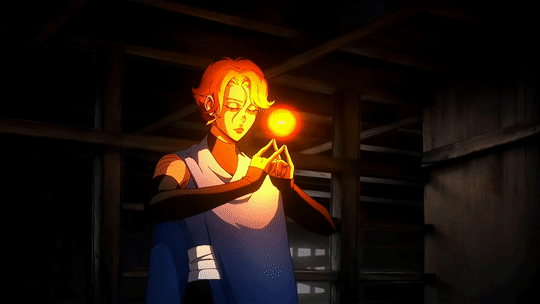
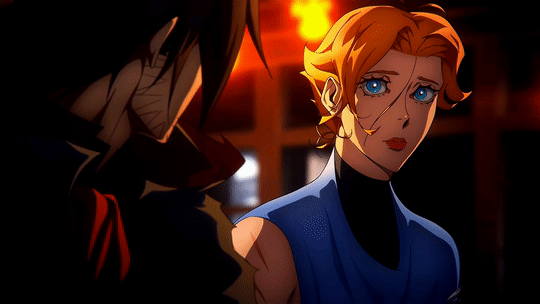


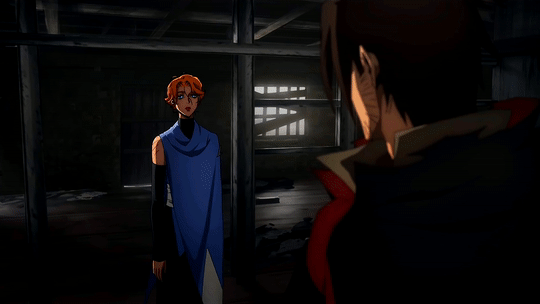


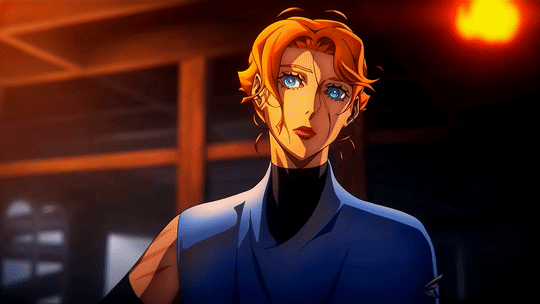

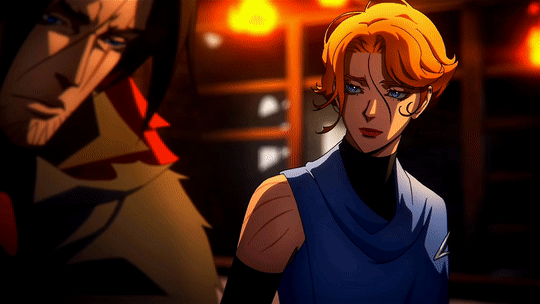

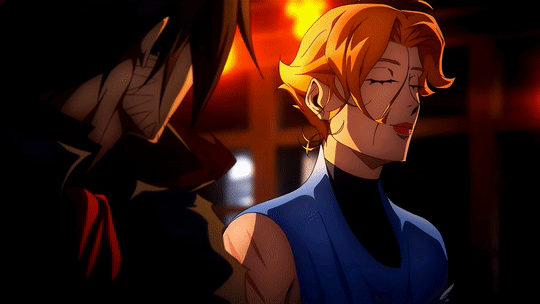



#Castlevania#castlevania gifs#castlevania sypha#castlevania s4#castlevania season four#Castlevania Season 4 Episode 4#gif#gifs#gif hunt#gifset#gif pack#Sypha Belnades#syphabelnades#sypha belnades gifs#sypha belnades gif pack#sypha gifs#castlevania season four episode four gifs#castlevania season four episode four
0 notes
Text
We're almost done with Castlevania, and I think my favorite characters have shaped up to be Isaac, Hector, and the vampire queen polycule. I just want good things for the Forge Husbands and for Striga and Morana.
Please, final four episodes, do not let me down. Especially after the bullshit they pulled in season 3 with Alucard's new polycule deciding to try and kill him for the weakest fucking reason I could possibly imagine. That made me so mad.
26 notes
·
View notes
Text
I feel like people complaining about Nocturne's first season forget how far we've come ?? Like Castlevania's season one was FOUR episodes long : we hadn't met more than half of the characters, the story was slow as hell to come together and we had to wait more than a year for season 2, you guys forget FAST
33 notes
·
View notes
Text
I’m rewatching episode four of Castlevania season two and: who is the best character in Castlevania and why is it Isaac?

32 notes
·
View notes
Note
i didn’t think you could become any cooler but i see that you’ve written about richter belmont and now i was just proven incorrect. I DIDNT KNOW YOU WERE INTO CASTLEVANIA???? so cool >///<
hii, sosa! why thank you, you’re too sweet :) i think you’re even cooler! 🎀 just to mention, i love love loveee talking about castlevania!!! i’ve actually been terribly obsessed with the franchise for a hot minute now; since about november, i believe! i binged nocturne a few months back, and i’ve loved richter ever since ❤︎ couldn’t deny his cute charm even if i wanted to . i have just a few fics out there for him at the moment, but i’m planning to write much more for other characters, especially alucard, in the future! might even rewatch all four seasons of castlevania just to see my man >.<
#thanks so much for dropping by! mwuah 💋#꒰ঌ 𝓁ℯ𝓉𝓉ℯ𝓇𝓈.ᐟ ໒꒱#꒰ঌ 𝒻𝒶𝓃𝒹ℴ𝓂 ⨾ 𝒸𝒶𝓈𝓉𝓁ℯ𝓋𝒶𝓃𝒾𝒶.ᐟ ໒꒱#( 𝓂ℴℴ𝓉𝓈.ᐟ )#( sosa! )#richter belmont#alucard#(castlevania!)#inbox!#moots!
9 notes
·
View notes